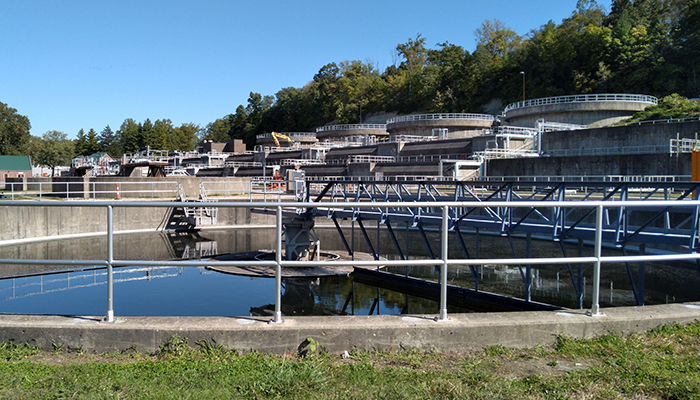
Donohue & Associates and Richmond Sanitary District (District) received a 2023 ACEC Indiana Engineering Excellence Honor Award for the William. E. Ross Wastewater Treatment Plant Phase 1 Improvements Project. The District selected Donohue to serve as their engineering consultant to prepare a Facility Plan for Secondary Treatment Improvements.
Donohue discovered issues with the District’s intermediate treatment process. Through process modeling, Donohue determined that the intermediate process could be abandoned and that the nine aeration banks were sufficient for conversion to a single-stage nitrification secondary process.
It also became evident that the main operational issue the plant was experiencing was solids handling, particularly the maintenance of too much solids inventory. It was determined that the retrofitting of an existing garage space for Rotary Drum Thickener (RDT) sludge thickening would be implemented as an early-out type project to restore effective solids inventory control and plant operations. The thickening process, by lowering solids inventory and blanket levels in the final clarifiers, has allowed the plant tertiary filters to treat the full facility peak flow rate of 36 MGD.
In Phase 1, four primary influent pumps were replaced, two new high-speed turbo-blowers were installed, a new aeration flow split structure was constructed, nine 3-pass aeration banks now have new fine bubble diffusers, baffle walls, and large bubble mixing installed for selector zones, RAS flow metering and control improvements were performed, and new mechanisms were installed in four final clarifiers. Phase 1 also included various I&C and SCADA system improvements.
Upgrades to the secondary treatment system restored peak plant capacity to 36 MGD while reducing overall plant energy usage by 34% and nearly eliminating chemical used for phosphorus removal. The use of magnetic bearing high speed turbo blowers, diaphragm control valves, and DO probes allows for automatic dissolved oxygen control using a most open valve method while overcoming the challenge of three different water depths and therefore three different air pressures required for each pass of the aeration tanks. Creative construction sequencing and new structure design within confined site constraints allowed plant capacity and the desired level of treatment to be maintained during construction.
